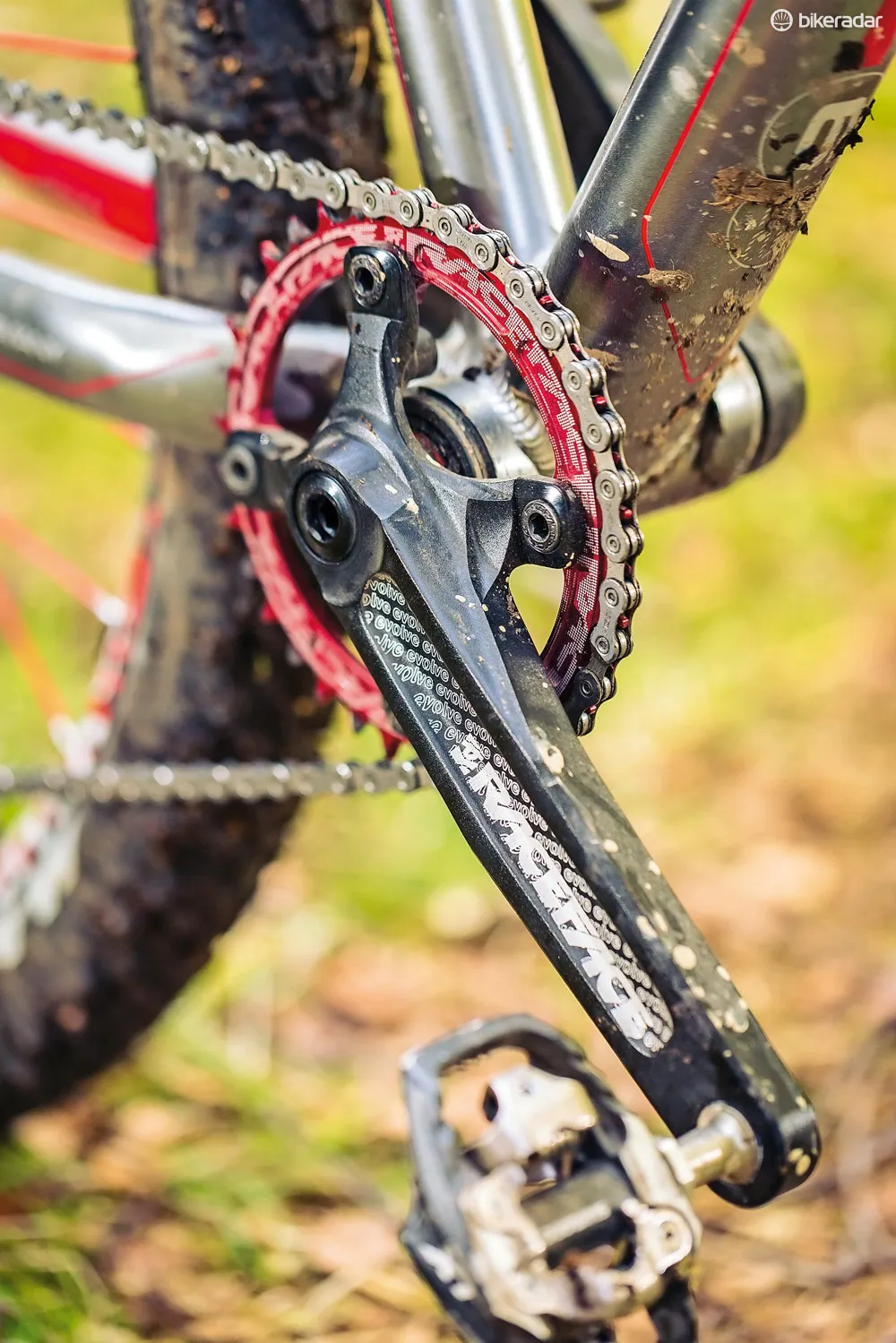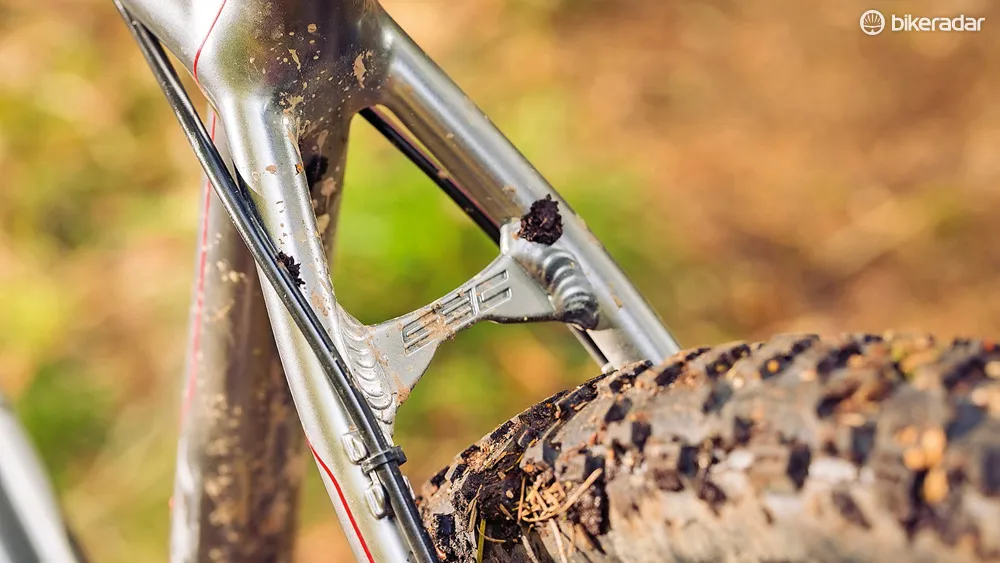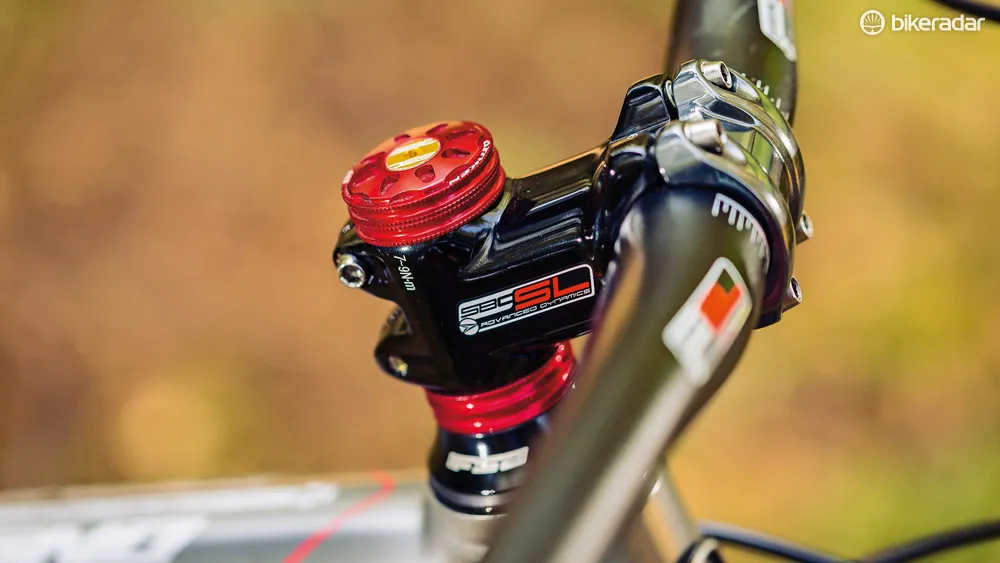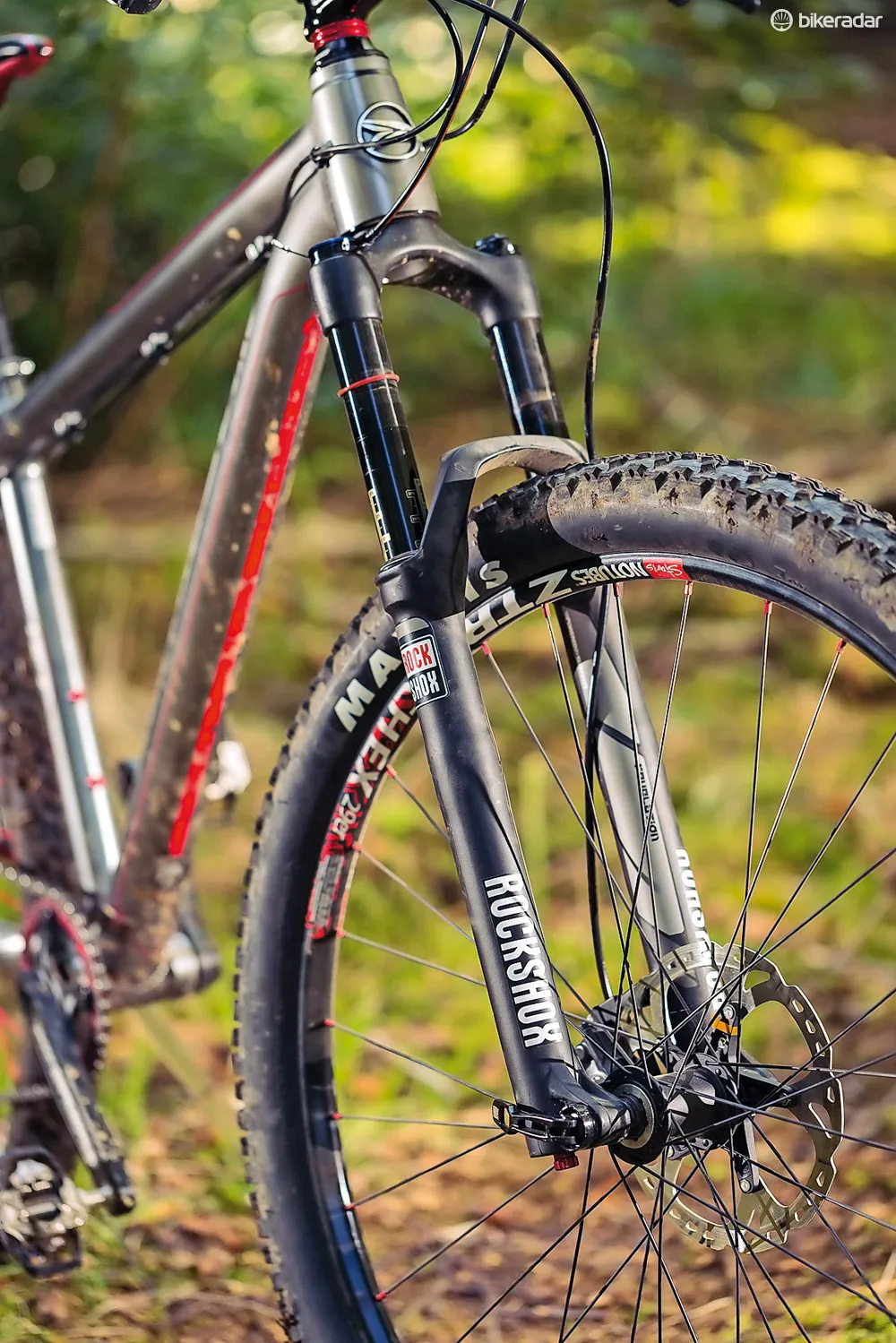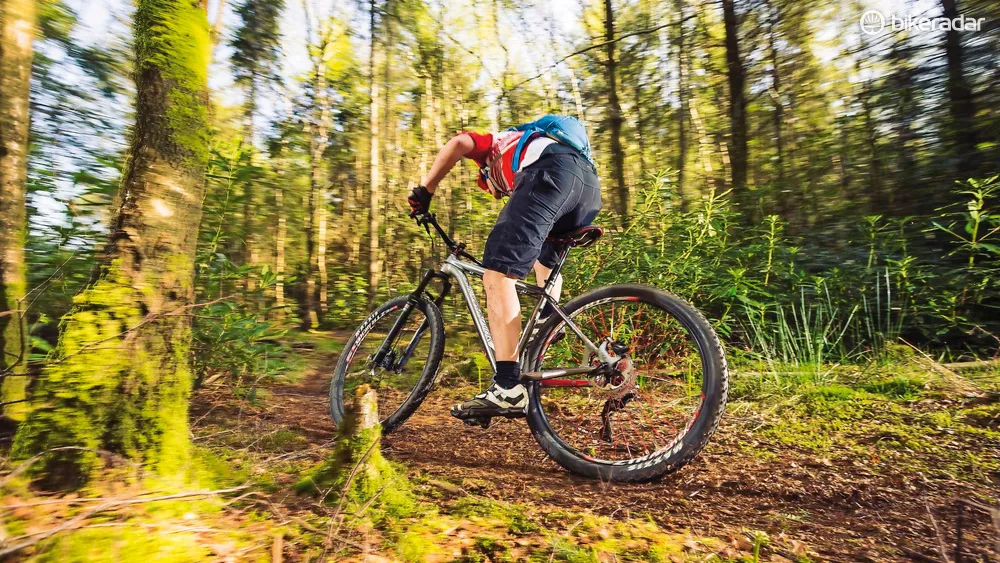Silverback’s Signo Technica is the German brand’s new approach to a trail bike, combining a stiff, agile rear end with a front end that eats up impacts. How’s it done this? By means that’ll surely ignite yet more fireworks in the world of the wheel size debate – it’s mixed 650b with 29in.
Ride and handling: best of both worlds?
On paper, mixing the two wheel sizes kind of makes sense. Up front you’ve got the 29er wheel with its increased grip and ability to roll over lumps and bumps, giving you added control that you want from the front wheel. At the back, the smaller 650b wheel is sturdy, flickable and agile; grip back there doesn’t matter quite so much.
The Signo Technica is far from a bad bike. The 140mm RockShox Revelation fork, which can drop down to 110mm for steeper climbs, when combined with the 29in front wheel gives a ton of control. The 2.25in Maxxis Ardent tyres don’t have the greatest edge on them, but there’s plenty of grip in dryer conditions, and that big wheel does roll over terrain imperfections with ease. At the back, the 650b wheel skips over the ground, verging on being playful, especially if you ride with your weight over the fork. When the Ardent loses traction slips, drifts and skids are controllable, rarely chucking you off the bike.
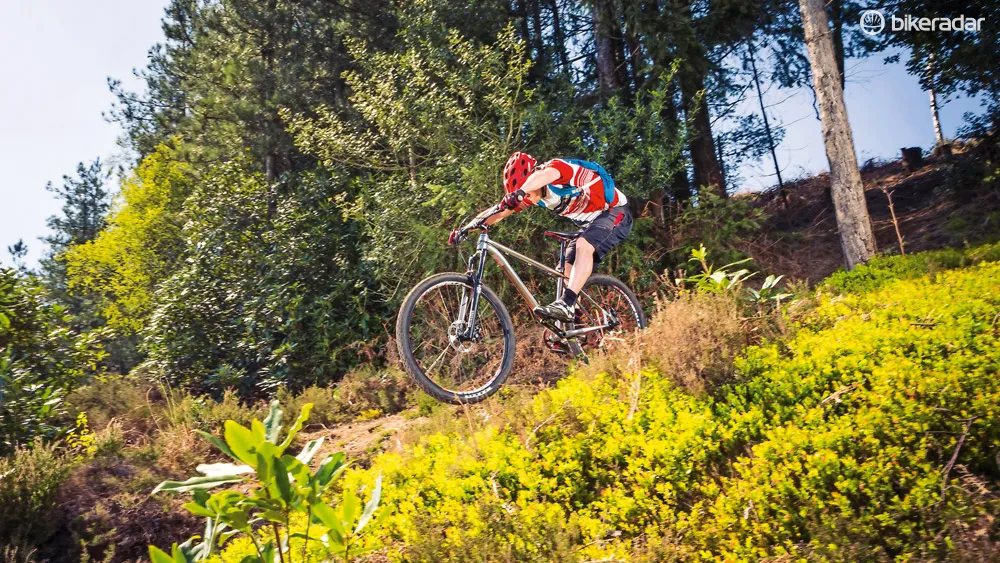
At times, when front and back strike a harmony, the Signo can be a joy to ride
Silverback’s marketing bumpf claims that this bigger wheel up front setup helps ‘balance out the trail steepness’, what it calls 279 Dynamic Efficiency Geometry. What really happens is that you get a relatively high front end that works reasonably well on steeper terrain, but can feel slightly pedestrian on flatter sections. The Revelation’s Dual Position Air damper provides a decent level of mid-travel support, which is handy on steeper terrain. With 140mm of travel up front and nothing at the back, when the fork is pushed through its travel, it does steepen the frame’s angles, so that support is certainly appreciated.
We’re not convinced by the actual science behind the 279 Dynamic Efficiency Geometry; there’s certainly no mention of it making climbs steeper…
What the wheels do though is highlight the differences between the sizes. Regardless of which side of the fence you sit on, when the trail gets choppy, the difference in handling becomes apparent. While the front rolls over bumps, no doubt helped by the suspension, the rear feels like it gets caught up on edges, and needs a little extra persuasion to get over them. On technical climbs especially, the Signo Technica feels like a bike of two halves.
The stout construction, with the tapered back end, gives a stiff ride that’s a little unforgiving on the lower back. We tempered this by running the relatively large volume rear tyre at lower pressures.
Frame and equipment: trail fit kit
The geometry is all held together with Silverback’s Vanadium Flow frame, itself a well-put-together and nicely finished piece of kit. The main tubes are triple butted, and smooth welded. Aesthetically it works well – giving a more organic look – but the reasoning behind it, so says Silverback, is that there’s a greater weld area and less stress risers, both of which should make the frame more durable.

The Signo Technica's smooth welded and triple butted frame is a well made pleasure
With a trail focus, all the frame features we usually look for are included. A 31.6mm seat tube is ready to take a dropper post (although there’s no provision for stealth routing), there’s a 142x12 Maxle bolt-thru rear axle, press-fit bottom bracket and tapered head tube (which, to be fair, pretty much every bike comes with these days), which keeps the frame tight and stiff. Cables are externally routed, which we prefer because it makes giving them TLC a whole lot easier. They’re also full length, which is ideal for keeping the crud out.
When it comes to the kit that Silverback’s bolted to the frame, it’s clearly done its homework. While some Euro brands are still stuck in the land of long stems and narrow bars, Silverback’s added a 60mm stem and 740mm bars – not quite as short or as long as you could go, but they certainly help you head in the right direction.
The short stem, wide bar combo helps keep steering snappy and responsive, and the bars give better control and keep your weight forward. The bars and stem, along with the post and saddle are own-branded pieces. The saddle and bars have a reasonable shape, although there’s no pressure-relieving channel on the saddle, and there’s a fair bit of backsweep (nine degrees) on the bars. Our only major spec issue is the bolted seat clamp. For a bike designed to hit technical trails hard and then pedal back to the top, it’s inevitable that your multitool will be lost in the bottom of your bag. Just fit a QR please!

Cockpit components are bang on the money, though some may not like the sweepy bars
Shimano kit largely controls stopping and going. The SLX brakes are crowd pleasers, with their dependable power, backed up with Ice Tech pads and 180/160mm Centerlock rotors. The shifters and rear derailleur come from the XT stable, again providing reliable performance, the Shadow+ derailleur featuring the clutch mechanism keeps the bike nice and quiet.
To mix it up Silverback’s gone with a Race Face Evolve crank with 34T Narrow Wide chainring. With Shimano rings not benefitting from the chain retention properties of a narrow/wide design, this allows Silverback to build a Shimano geared bike without needing to add a chainguide. This setup worked well, with the 34/36 bottom gear being just low enough for the majority of our riding.
Shimano supplies the SLX hubs, and Stan’s the Arch EX rims. So long as you take care of the cup and cone bearings, Shimano hubs last well and the lightweight, tubeless capability of the mid-width Stan’s rims have given them an enviable reputation.
Summary: mixed messages
There aren’t many brands around that are mixing up wheel sizes – Liteville being the obvious other one out there. There are times – like on steeper trails and when razzing your local trail centre – when riding the Signo Technica you think it’s a work of genius, with both ends of the bike singing from the same hymn sheet. But at others it feels disjointed, making us wish it had a pair of identical hoops. Oh, and taking two tubes in your pack is a pain in the ass, so we ended up stretching a 650b tube into the front wheel.
